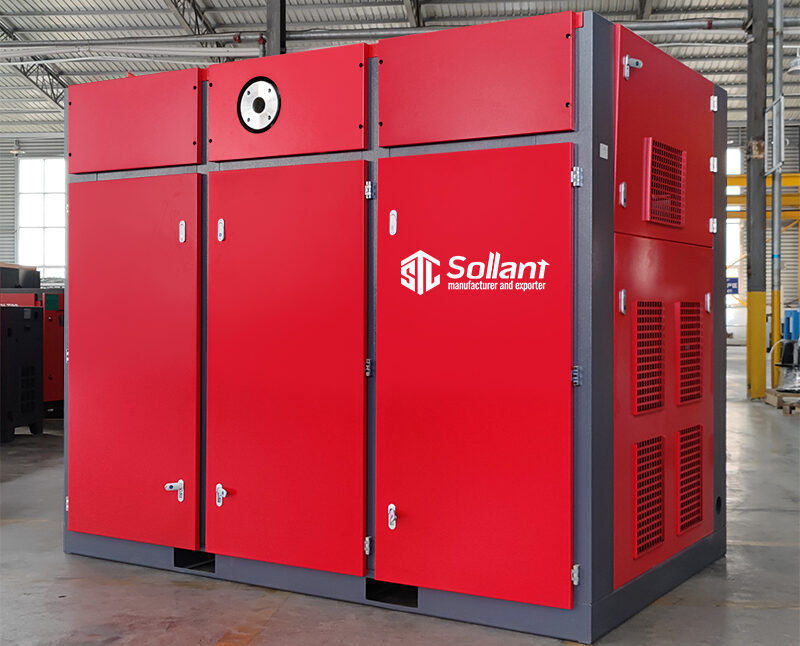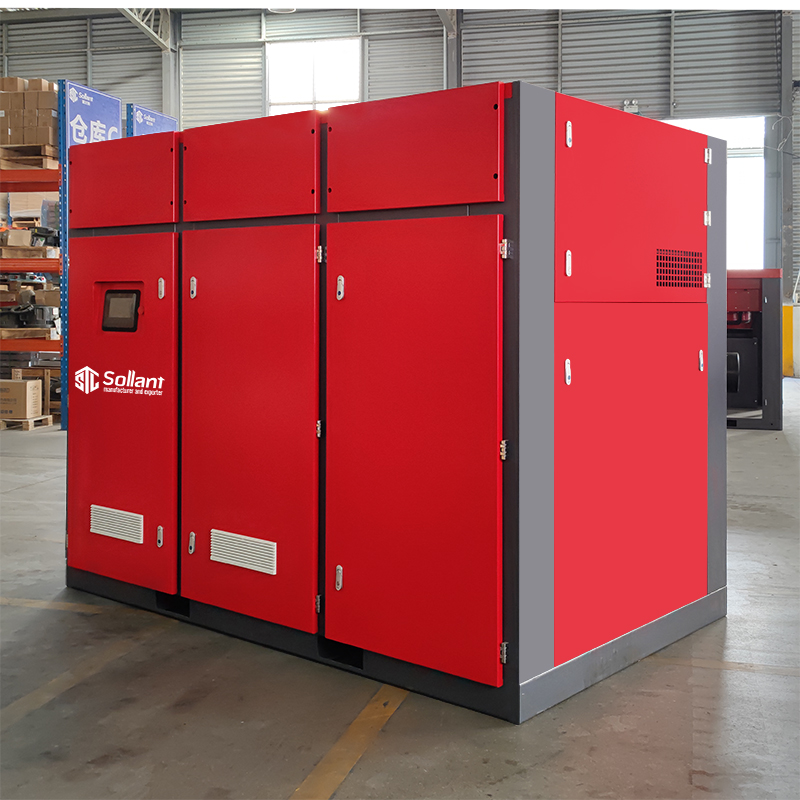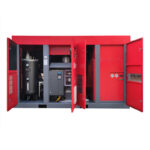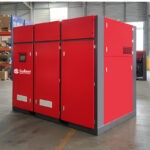Finding water in the oil-gas tank of a screw air compressor is a common issue that can lead to reduced efficiency, equipment damage, and costly repairs if left unaddressed. This article explores the main reasons why water accumulates in the oil-gas tank and provides practical solutions to prevent it.
1. Humidity in the Intake Air
- Cause: High humidity levels in the intake air lead to excess moisture entering the compressor. As air compresses, the moisture condenses, forming water droplets in the oil-gas tank.
- Solution: Installing an air dryer or a moisture separator can help to reduce the humidity level of intake air. Ensuring the compressor is in a well-ventilated and controlled environment is also beneficial.
2. Condensation Due to Temperature Fluctuations
- Cause: Frequent temperature changes, especially in areas with fluctuating climates, cause condensation within the compressor. If the temperature of the oil-gas tank drops, condensation forms on the internal surfaces.
- Solution: Insulating the compressor room and maintaining a stable temperature can help minimize condensation. Additionally, using a drain valve to release any accumulated moisture in the tank can prevent buildup.
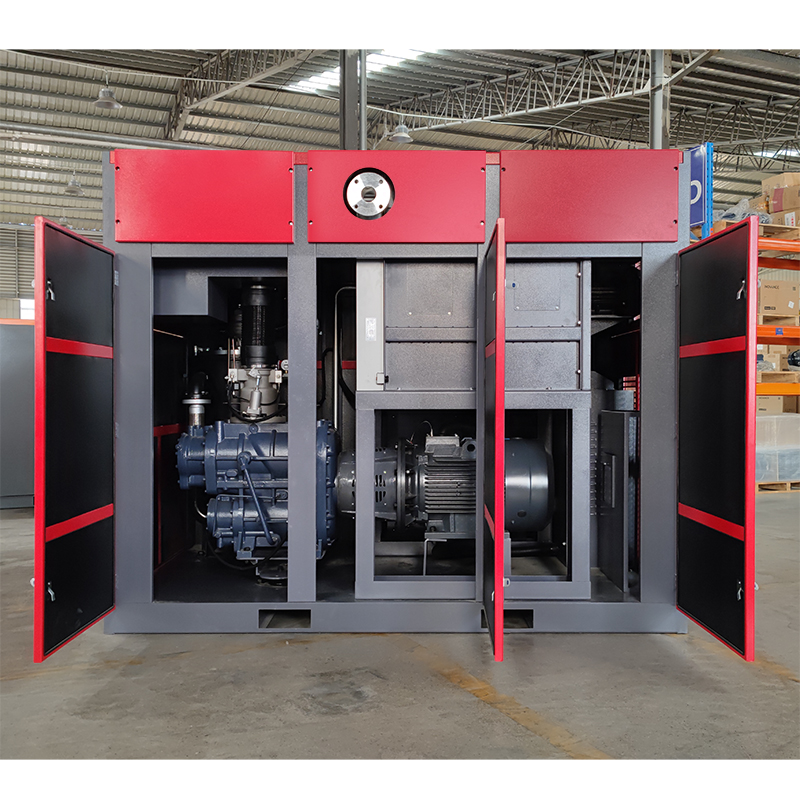 Screw Air Compressor
Screw Air Compressor
3. Short Operating Cycles
- Cause: Operating the compressor in short cycles doesn’t allow the equipment to reach its optimal operating temperature. This causes the compressor to produce less heat, reducing its ability to evaporate the moisture within the system.
- Solution: Avoid short cycles whenever possible. Instead, allow the compressor to run long enough to reach its ideal operating temperature. This helps evaporate any internal moisture and reduces water accumulation.
4. Insufficient Draining and Maintenance
- Cause: Without regular draining, water and contaminants accumulate in the oil-gas tank, leading to excess moisture. Water collects over time, increasing the risk of corrosion and reducing the efficiency of the compressor.
- Solution: Set up a maintenance schedule to regularly drain the oil-gas tank and replace filters. An automatic drain system can be particularly effective in high-humidity environments, allowing continuous moisture removal.
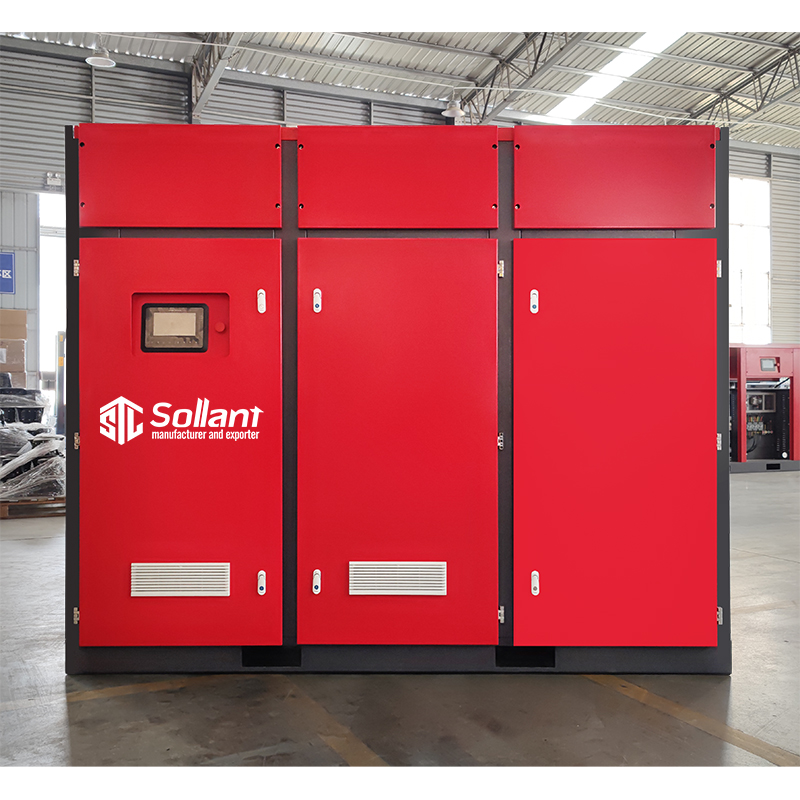 Screw Air Compressor
Screw Air Compressor
5. Faulty Separation System
- Cause: The oil-water separator is responsible for removing water from the compressed air. If this separator malfunctions, it fails to filter moisture effectively, allowing water to pass into the oil-gas tank.
- Solution: Regularly inspect and replace the oil-water separator as part of routine maintenance. Keeping this component in good working condition ensures efficient water separation.
6. Low Ambient Temperatures
- Cause: Low ambient temperatures cause cold air to enter the compressor, resulting in a higher rate of condensation. This can lead to more water buildup in the tank, especially in colder months or climates.
- Solution: If possible, house the compressor in a temperature-controlled environment to prevent low-temperature condensation. Using an air dryer also helps reduce condensation in cold conditions.
7. Faulty or Inefficient Dryer System
- Cause: A dryer system that is malfunctioning or not suited for the compressor’s air output may fail to remove sufficient moisture from the air, allowing excess water to enter the oil-gas tank.
- Solution: Ensure that your air dryer is the correct type and size for your compressor. Regularly check and maintain the dryer system to ensure it is operating effectively.
Conclusion: Regular Maintenance to Prevent Water Accumulation
Regular inspection and preventive maintenance are essential to prevent water buildup in a screw air compressor’s oil-gas tank. Implementing measures like controlled ambient temperatures, appropriate draining, and efficient air drying systems can help maintain compressor efficiency, extend its lifespan, and minimize potential issues associated with water accumulation.
By understanding and addressing the causes of water buildup in the oil-gas tank, users can avoid disruptions and ensure optimal compressor performance.
How to Reduce the Starting Current of High-Voltage Air Compressors
Boost Efficiency with Smarter Choices | Sollant Variable Speed Screw Air Compressor

